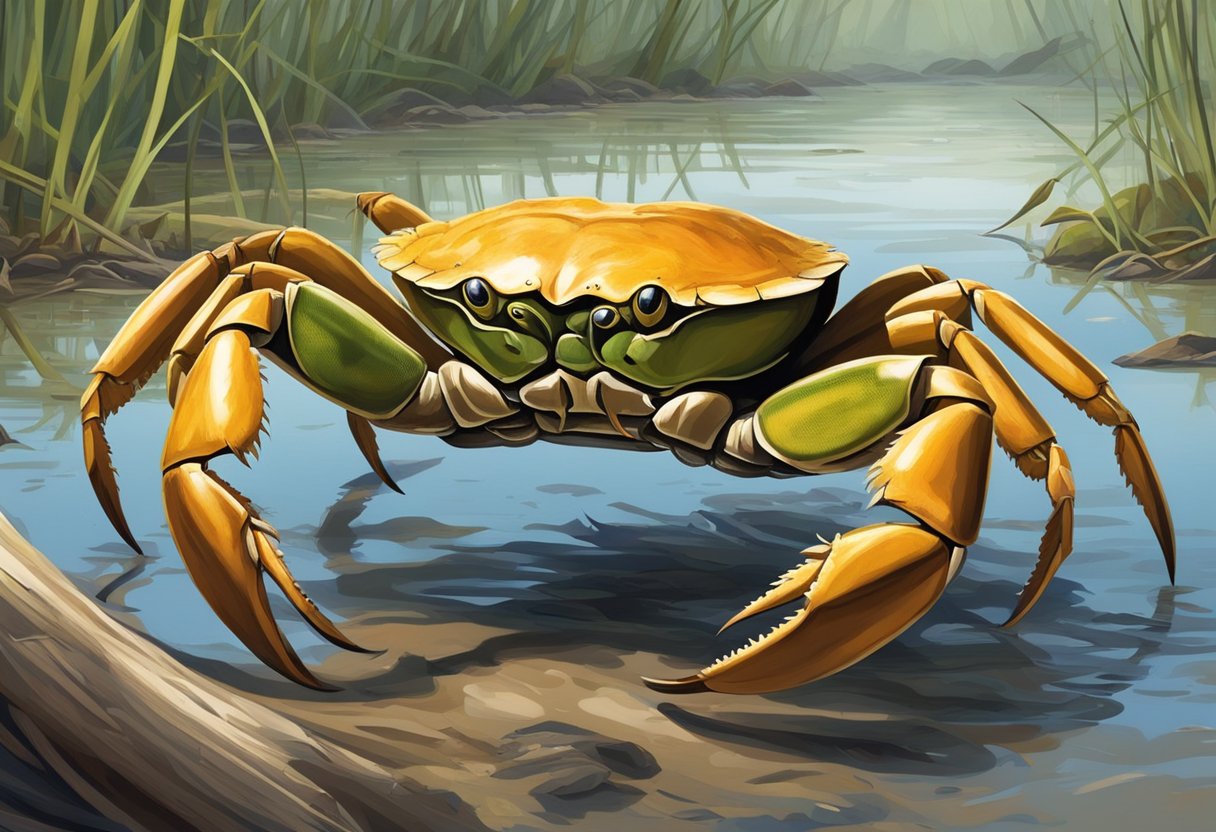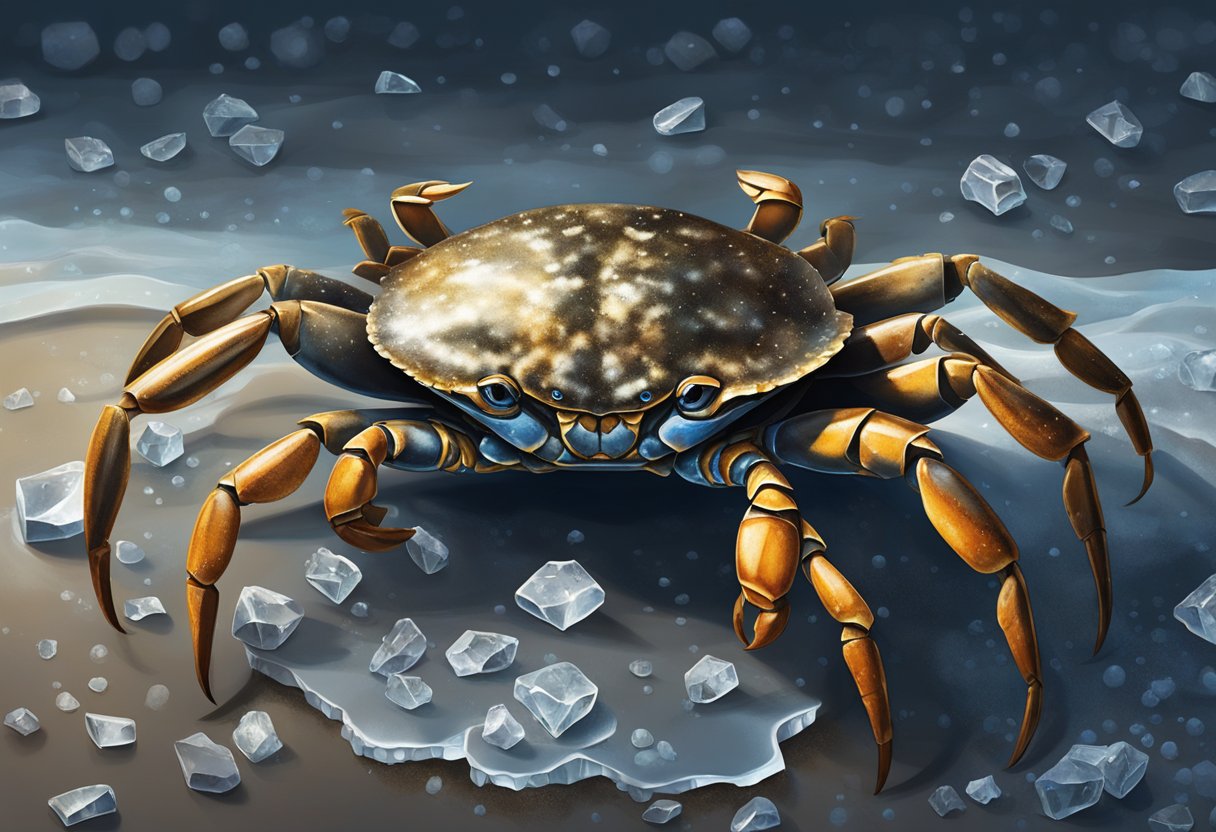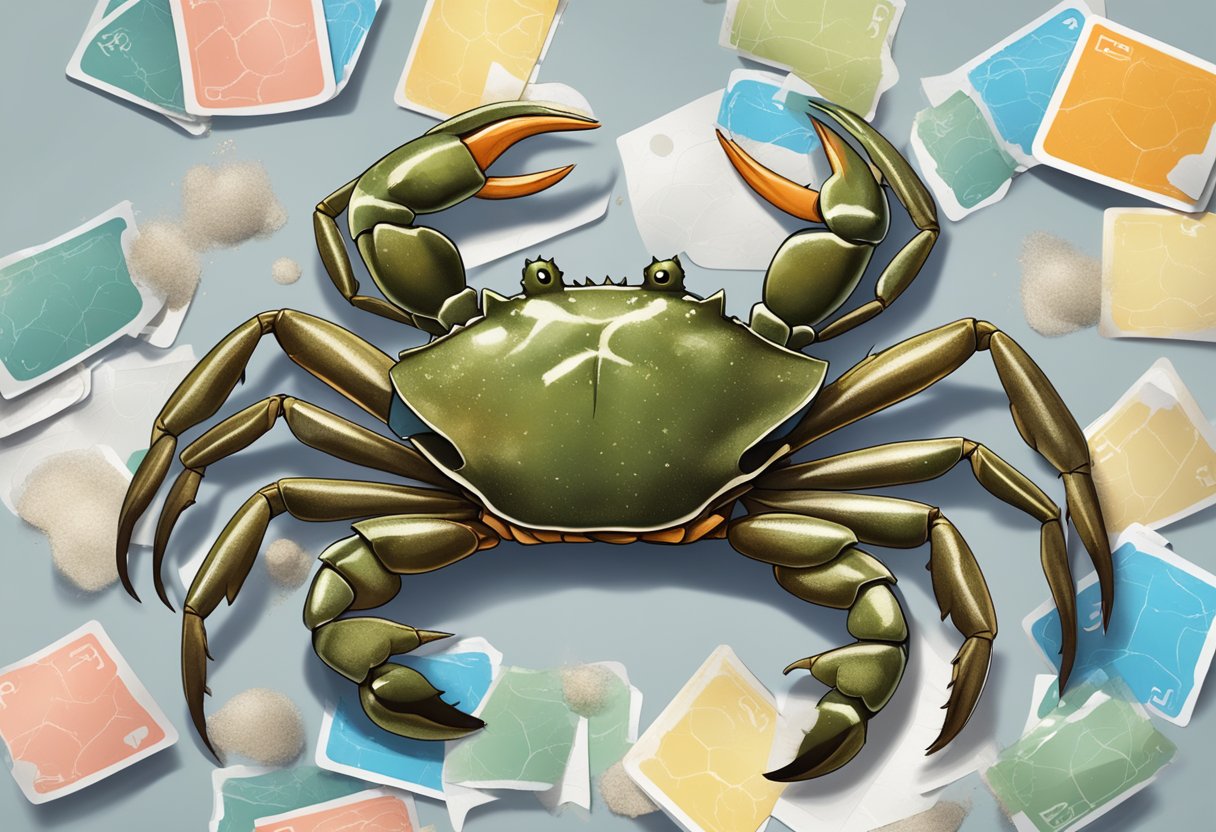Mud crab is a type of crustacean that is found in the estuaries and mangroves of Africa, Australia, and Asia. It is also known as Scylla serrata, black crab, and mangrove crab. Mud crab is an ecologically important species of crab that plays a vital role in maintaining the balance of the ecosystem.
Mud crab is a popular seafood delicacy that is enjoyed by many people all over the world. It is known for its sweet and succulent meat, which is highly valued in the culinary world. Mud crab is a versatile ingredient that can be cooked in a variety of ways, including steaming, boiling, grilling, and frying. It is also used to make a variety of dishes, such as chilli crab, crab cakes, and crab soup.
Key Takeaways
- Mud crab is a type of crustacean that is found in the estuaries and mangroves of Africa, Australia, and Asia.
- Mud crab is an ecologically important species of crab that plays a vital role in maintaining the balance of the ecosystem.
- Mud crab is a popular seafood delicacy that is enjoyed by many people all over the world.
Biology and Habitat

Species Identification
Mud crabs, also known as Scylla sp., are a type of invertebrate that belong to the family Portunidae. They are commonly found in estuaries and other brackish water habitats. The most common species of mud crab are the giant mud crab (Scylla tranquebarica) and the mangrove crab (Scylla serrata). These crabs are known for their large size and meaty claws, which make them a popular seafood delicacy.
Life Cycle and Reproduction
Mud crabs have a complex life cycle that involves several stages of growth and development. Juvenile crabs molt several times before reaching maturity, at which point they are able to reproduce. Female crabs release thousands of eggs, which hatch into larvae that are carried by ocean currents. These larvae eventually settle in suitable habitat and grow into adult crabs.
Habitat and Distribution
Mud crabs are found in coastal waters throughout the Indo-Pacific region, including Australia, Asia, and Africa. They are commonly associated with mangrove areas, which provide suitable habitat for both juvenile and adult crabs. Mud crabs are also found in estuaries and other brackish water habitats.
Mangrove habitats are particularly important for mud crabs, as they provide shelter and food for both juvenile and adult crabs. Suitable habitat for mud crabs includes areas with soft sediments and plenty of hiding places, such as fallen logs and mangrove roots. Mud crabs are also found in areas with seagrass beds, which provide additional food and shelter.
Overall, mud crabs are an important part of coastal ecosystems, and their habitat is closely linked to the health of mangrove and estuarine environments. Understanding the biology and habitat requirements of mud crabs is important for their conservation and sustainable management.
Culinary Profile

Mud crab is a highly prized seafood delicacy across Asia, particularly in Southeast Asia. These edible crabs can be found in fish markets across the region and are often enjoyed in social settings due to their large size and succulent meat.
Cooking Techniques
Mud crabs can be cooked in a variety of ways, including steaming, boiling, grilling, and frying. The most popular preparation method is Singapore Chilli Crab, which involves cooking the crab in a spicy sauce made with garlic, ginger, ketchup, and fish sauce. Another popular preparation method is Thai Curry Mud Crab, which involves cooking the crab in a rich curry sauce made with coconut milk, Thai curry paste, and other spices.
Cultural Significance
Mud crab is an important part of the culinary traditions of many Asian countries, including China, Japan, and Southeast Asian nations such as Singapore. In these cultures, mud crab is often served as a special dish during important events and celebrations.
Sustainability and Conservation
Due to overfishing and habitat loss, mud crab populations are declining in many parts of the world. To help protect these important species, marine protected areas have been established in some regions. When purchasing mud crab, it is important to look for sustainably sourced options to help support conservation efforts.
In summary, mud crab is a highly prized seafood delicacy in Asia, particularly in Southeast Asia. It can be cooked in a variety of ways, including Singapore Chilli Crab and Thai Curry Mud Crab. Mud crab is an important part of the culinary traditions of many Asian cultures, and it is important to support conservation efforts to protect these valuable species.
Frequently Asked Questions

How much does a mud crab typically cost?
Mud crabs can be quite expensive, with prices varying depending on the location and season. On average, a medium-sized mud crab can cost around £20-£30, while larger ones can cost upwards of £50. It's important to note that prices can fluctuate based on supply and demand, so it's always a good idea to check with your local fishmonger for the most up-to-date prices.
Where can I find mud crabs for sale nearby?
You can typically find mud crabs for sale at your local fishmonger or seafood market. Additionally, some supermarkets may also carry them. If you're unsure where to find them, a quick online search for "mud crabs for sale near me" should yield some results.
What distinguishes a mud crab from a sea crab?
Mud crabs are a type of crab that live in brackish and freshwater areas, such as mangroves and estuaries. They are typically smaller than sea crabs and have a distinctive dark brown or greenish-black colour. Additionally, mud crabs have a more rounded body shape and larger claws than sea crabs.
What's the average size of a mud crab?
The average size of a mud crab can vary depending on the species and location. In general, though, mud crabs can range from around 10-20cm in width, with some larger specimens reaching up to 30cm or more.
What's the local name for mud crabs in different regions?
The local name for mud crabs can vary depending on the region. In the UK, they are typically referred to simply as "mud crabs". In other parts of the world, they may be known by different names, such as "mangrove crabs" or "black crabs".
Are mud crabs considered safe and enjoyable to eat?
Mud crabs are considered safe to eat as long as they are cooked properly. They are also considered a delicacy in many parts of the world, including Southeast Asia and Australia. Mud crab meat is known for its sweet, delicate flavour and is often used in dishes such as crab cakes and crab bisque.

